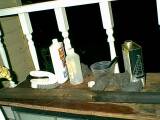 |
Cleaning up the tiller. It was pretty weathered and rough. The first step
is a good scrubbing with a cleaner, brush and steel wool. |
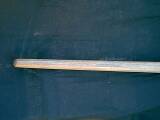 |
After cleaning, the wood was bleached out a bit with a teak brightener
(oxalic acid) to bring out the grain. |
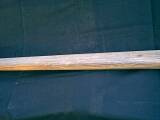 |
After repeated sandings its ready for a coat of varnish. The weathering
had caused the grain to split in places, so the surface isn't entirely smooth.
Hopefully, the varnish will even some of that out. |
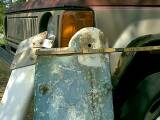 |
This was the general state of the rudder when I got it. |
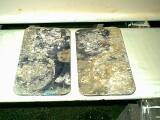 |
Hinge plates. These are aluminum and are corroded so bad the pitting is
almost all the way through the metal. They will be replaced. |
 |
The top of the lower section. The fiberglass is broken around where the
hinge bolt goes through (hard to see in this picture) and the wood layers
of the rudder are splitting. At this point, most of the paint has been
stripped off. |
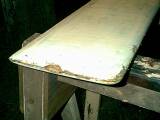 |
Rudder bottom. There are some good sized gouges and and a hole through
the gelcoat which I may be able to fill with epoxy. |
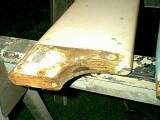 |
The bottom of the upper section. The corrosion on the hinge plates has caused
some damage to the gelcoat and the wood layers will need some attention. There
are also a lot of stains from the fittings. |
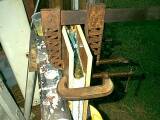 |
Top of the lower section - sealing up the top edge. This involved pouring
expoxy with no fillers over the end of the rudder so it would seep into the
splits and then clamping the rudder to draw the wood together. I put masking
tape around the edge to act as a dam to contain the excess epoxy. Once it has
all set, the excess epoxy can be trimmed off and gelcoat applied. |
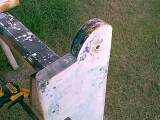 |
After the initial coat of epoxy had dried the excess ground off and sanded
smooth. There still are some holes to fill in order to make the surface even. |
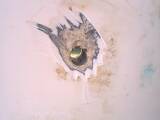 |
The hole for the hinge bolt. The surface was broken up and needed to be
repaired so the first step is to grind off the area around the hole. The
complete area will get a patch of structural filler which will be sanded smooth
before finishing. |
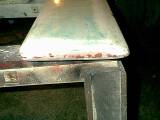 |
The first layer of filler has been applied and sanded down. The dark
spots are low points that will need to be filled again. The hole must lead to
a hollow spot in the rudder as it took a good quantity of epoxy and still was
not filled. |
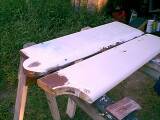 |
The second layer of filler is ready to be sanded down. After it is sanded
to shape with 150 grit paper, the entire surface of the rudder will be wet
sanded with 400 grit paper. It will then be ready for the first layer of gelcoat. |
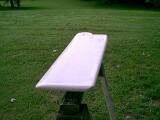 |
After two layers of gelcoat have been applied to the repaired areas. It
next will be wet sanded with 400 and 600 grit paper to smooth out the gelcoat.
There still is a little trace of the old blue bottom paint but that will be
covered with new bottom paint. |
 |
Well, it is supposed to be blue. After final sanding of the gelcoat repairs
the bottom of the rudder got a coat of Vinelast brown followed by the Interlux
blue. This paint covers very well and results in a nice finish - if you want
that metallic look! |


